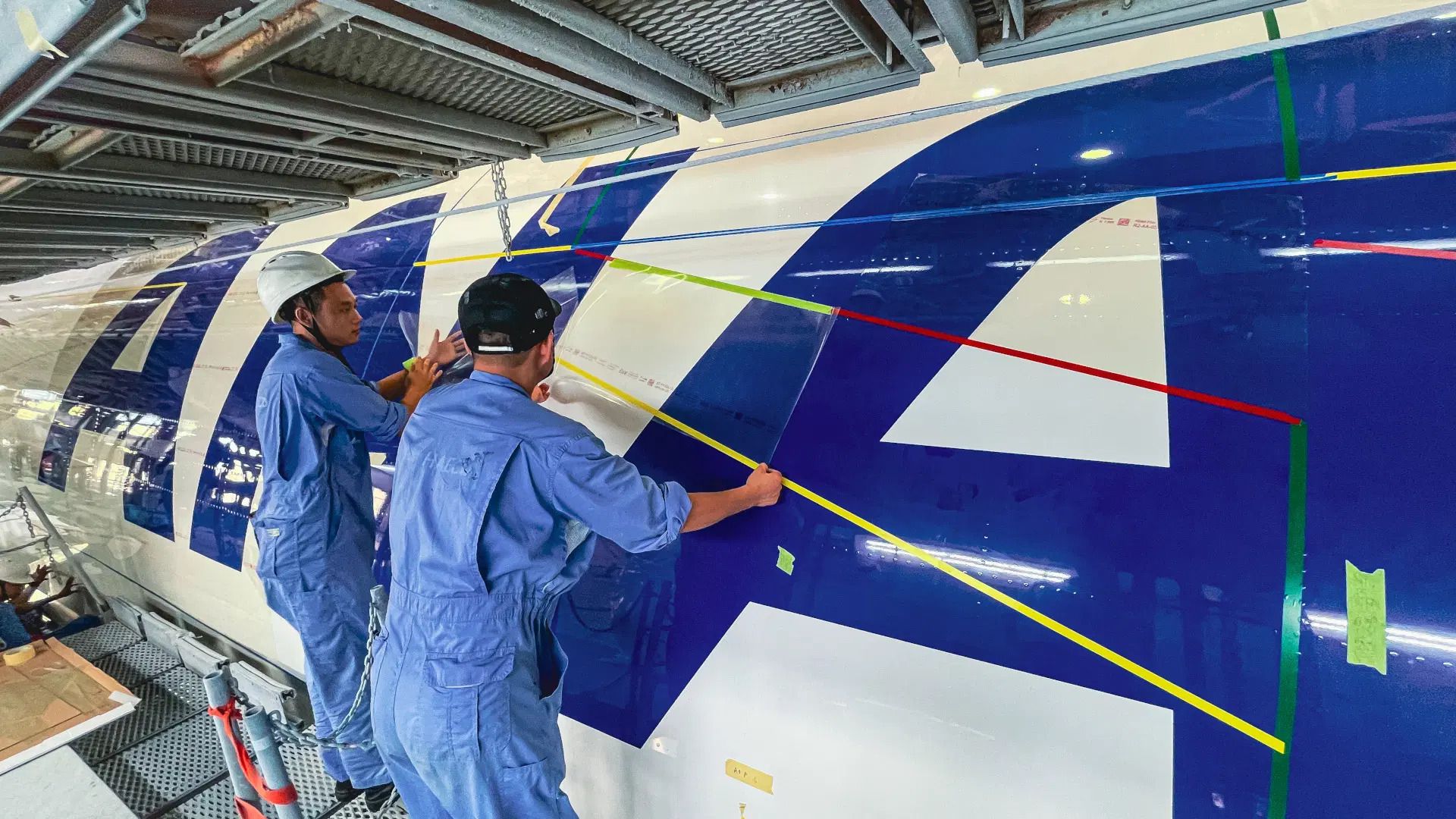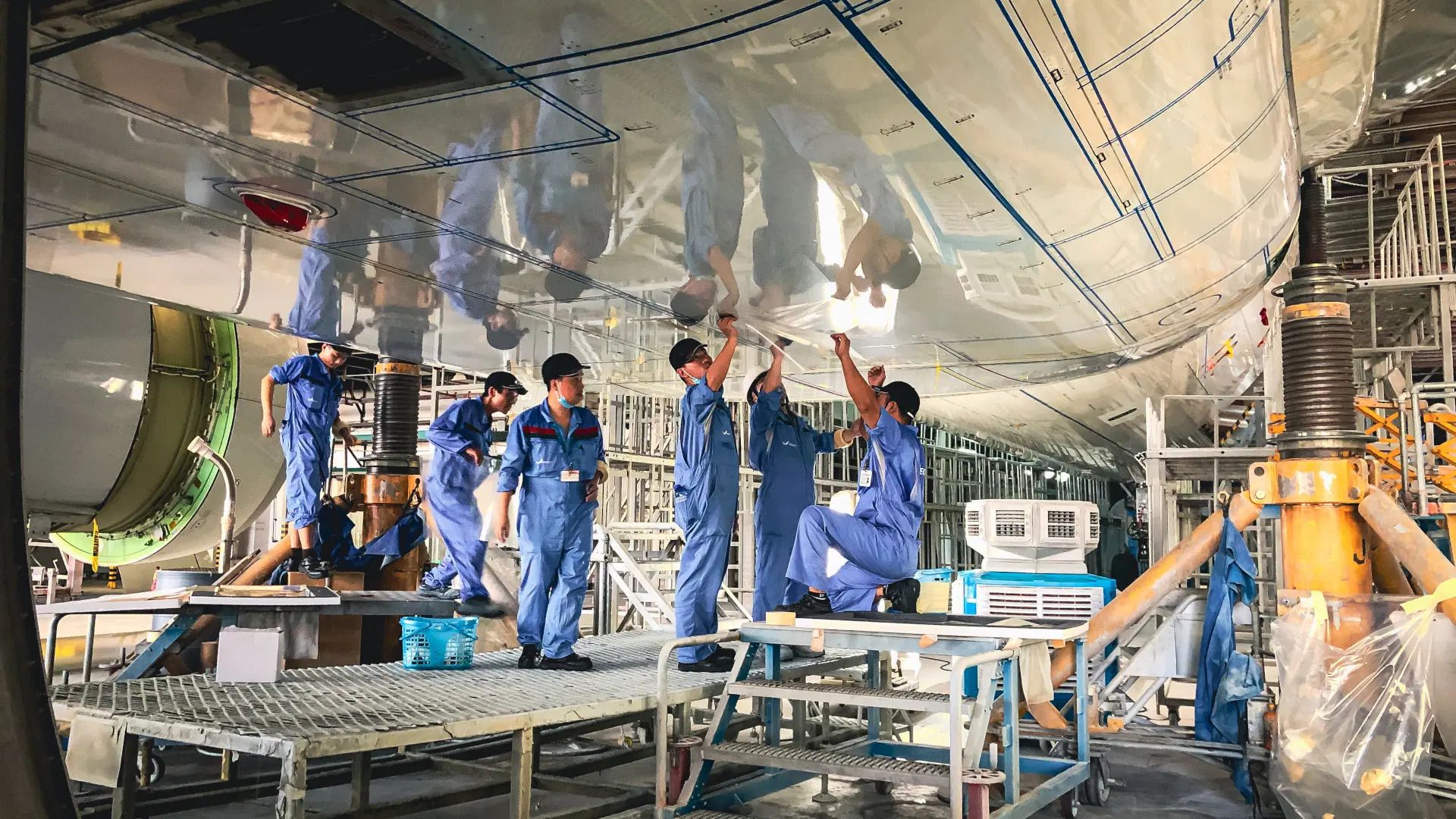Summary
- ANA’s first Boeing 777F to use special AeroSHARK film re-enters service.
- AeroSHARK technology cuts fuel consumption by 1-2%, potentially saving up to 250 tons of fuel per aircraft annually.
- ANA plans to apply the emission-reducing film to a passenger 777-300ER next Spring.
All Nippon Airways’ (ANA) first Boeing 777F equipped with a special emissions-reducing surface film has re-entered service, the airline has confirmed. The AeroSHARK film – which is applied over the fuselage and engine nacelles to reduce aerodynamic drag – will eventually be installed on one of the airline’s passenger 777s.
ANA 777F coated with AeroSHARK film
The Boeing 777-200F, registration JA771F, began scheduled freighter flights today and becomes the first All Nippon Airways plane to be fitted with AeroSHARK coating. Jointly developed by German MRO firm Lufthansa Technik and BASF, AeroSHARK technology emulates shark skin with microscopic riblets measuring 50 micrometers (0.05 millimeters) – this helps to reduce drag on the airframe, much like how a shark’s skin minimizes drag underwater.
Photo: ANA
Kohei Tsuji, Member of the Board, and Executive Vice President of Engineering and Maintenance at ANA, commented,
“The introduction of AeroSHARK technology on our Boeing 777 aircraft marks a significant milestone in our sustainability strategy, in support of our broader goal of reducing carbon emissions across our fleet.”
Several hundreds of square meters of AeroSHARK film now covers most of the freighter’s fuselage and nacelles. Data from Flightradar24 shows the plane’s first assignment was an 11-hour flight from Tokyo Narita (NRT) to Chicago O’Hare (ORD). At under six years old, JA771F is a fairly new aircraft delivered to ANA in May 2019.
There are now almost 20 aircraft in service globally fitted with the coating, the majority of which are flying under the Lufthansa Group. According to Lufthansa Technik, the global AeroSHARK fleet has logged over 100,000 flight hours and saved an estimated 19,000 tons in C02 emissions.
The technology is said to reduce fuel consumption by 1-2% per flight, adding up to major savings when applied across entire fleets – in fact, BASF and Lufthansa Technik believe AeroSHARK can deliver up to a 3% reduction in carbon emissions when covering larger surface areas. Per aircraft, the film will likely save around 250 metric tons of fuel and 800 metric tons of CO2 emissions, helping ANA achieve its goal of net-zero by 2050.
Passenger 777 next Spring
ANA will also apply the emission-reducing film to one of its passenger Boeing 777-300ERS, registration JA796A, a five-year-old airframe, which will enter service with its new coating next Spring. According to Lufthansa Technik, this makes ANA the first individual airline to operate both freighter and passenger planes with AeroSHARK technology.
Dennis Kohr, Senior Vice President of Corporate Sales Asia-Pacific at Lufthansa Technik, said,
“We are delighted to extend our long-lasting and fruitful cooperation with All Nippon Airways onto a proven solution to reduce their carbon footprint. I am confident that AeroSHARK will support ANA in becoming an ever-greener ‘Inspiration of Japan’.”
Photo: ANA
ANA is now the second Asian airline to fly with the film after Taiwanese carrier EVA Air, which is also equipping its 777 freighters with AeroSHARK – the airline has nine 777sF and has estimated the decision will help it reduce CO2 emissions by 7,800 metric tonnes annually. Like ANA, EVA Air has also expressed interest in applying the technology to its passenger fleet.



